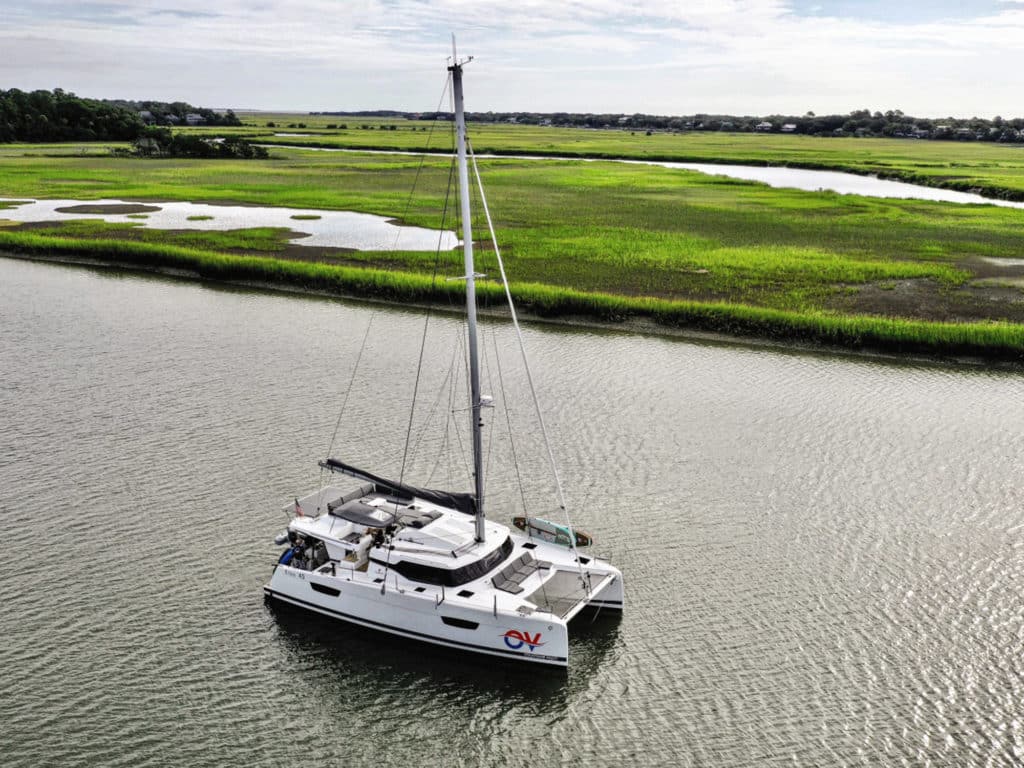
When I was a young and smitten sailor, hungry for more, an old salt gave me this advice: “Keep your sea bag packed, and never turn down a boat ride.”
I’m happy to say that I have followed his admonition to the best of my ability, and while in retrospect, a few of those rides would have been better off not taken, that practice has led to the best times of my life. Which is why, when I got the recent invitation from my friend Capt. RJ, I knew I had to go.
In a pandemic turn of events, organizers had canceled the 2020 US Sailboat Show in Annapolis, Maryland. RJ, meanwhile, had just taken command of a new Fountaine Pajot and was headed to the show from Fort Lauderdale, Florida, when he got the news. He and his wife, Jenna, had the boat partway up the Eastern Seaboard, with time to burn before heading south for the Caribbean charter season.
“We’d love to have you visit and let us practice our charter skills on you,” RJ texted. “And Charleston is a pretty great place to sail.”
Explore new waters with old friends? Check out a hot new cruising boat? You bet! My wife, Rebecca, and I spent an evening shifting clients, deadlines and travel plans on short notice. Then we grabbed those sea bags and flew east along with Jon, one of my best mates.
RJ was waiting when our taxi pulled up to the docks—a tall ex-hockey player with a gleam in his eyes and a grin splitting his beard at any excuse. We exchanged fierce embraces. The late-September wind was cold out of the north, and we were grateful to see the boat glowing in the dark. Rebecca and I hugged lovely Jenna. Inside our cabin, we smiled to see that she was already in full stewardess mode, having crafted little sea creatures out of towels on our plush and well-pillowed berth.
The next morning, I climbed on deck for a look around. We were side-tied on K dock at Charleston Harbor Marina, our bows pointed north. RJ said that the locals called this dock the litter box because all the cats parked here. The Cooper River ran past. The city of Charleston was across the river to our port, the distinctive triangles of the Arthur Ravenel Jr. Bridge lay straight ahead, and an imposing military craft loomed to starboard.
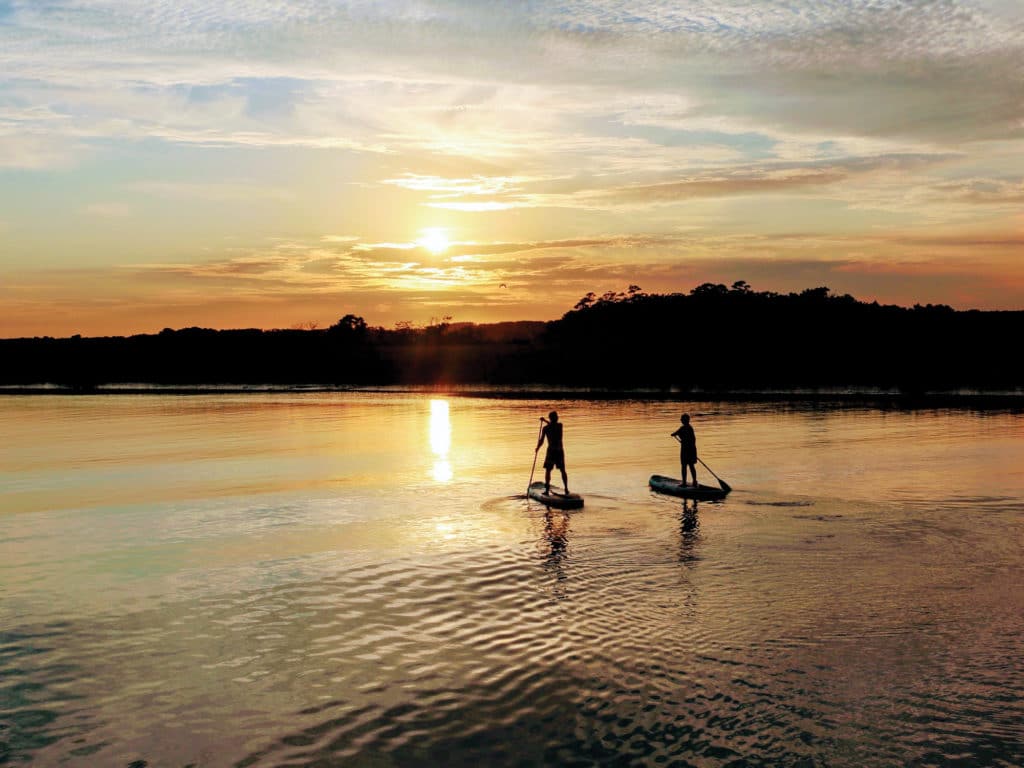
“The USS Yorktown,” RJ said. “Number 10 aircraft carrier ever built, and it’s seen a lot of action. It’s open as a museum, and it’s fascinating. I can’t wait to take you guys there.”
Cargo ships came and went along the river. One seemed particularly large, accompanied by an escort of fire boats spraying celebratory water into the air.
“That’s no ordinary ship,” Jon said. We looked it up, and sure enough, it was the CGM Brazil, the biggest container ship ever to visit the US East Coast, making its inaugural arrival: 1,204 feet long and built to carry 15,072 cargo containers. It’s one of the beauties of living aboard; these spontaneous boat encounters are bound to happen.
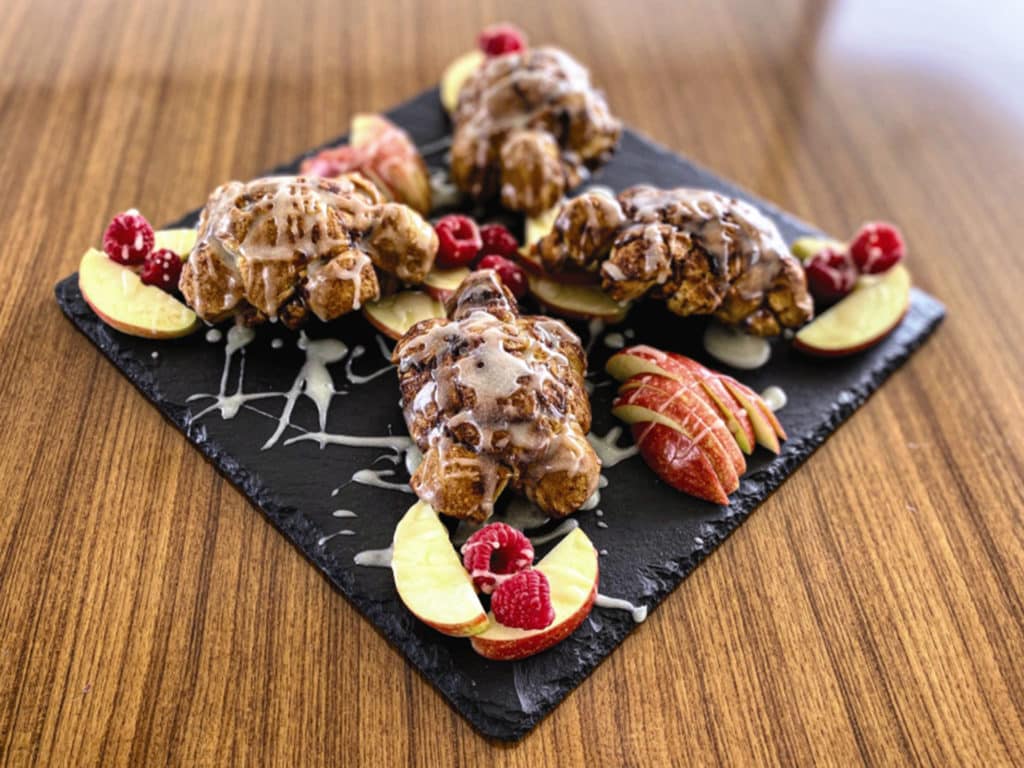
We were eager to walk the streets of Charleston, which friends had raved about and Travel + Leisure readers perennially name the nicest city in the US. RJ, Jenna, Jon, Rebecca and I boarded a water taxi at the head of our dock. As we crossed the Cooper River, we could imagine this seaport filled with the square riggers, schooners and riverboats of yore. By the 1730s, Charleston was a nautical powerhouse, with more than 500 deepwater sailing vessels arriving each year. It was ideally located on the circular Atlantic Ocean trade route, where the prevailing winds, and then the Gulf Stream, brought boats from Europe and the Azores via the West Indies.
Outgoing sea cargo of timber products, rice, and cotton made many families wealthy here, as did incoming sugar, rum, and manufactured goods. The wealth came with unspeakable suffering; an estimated half of all the Africans brought to America against their will came in through this port.
We walked along Bay Street past buildings painted with haint blue, originally made from indigo, which was the Gullah people’s color for fending off spirits, and Charleston green, traditionally Navy-issue black paint livened up with a touch of yellow. I marveled that any of these structures had survived centuries of wars, fire, economic ruin, earthquakes and storms.
We stopped on a whim at Pearlz Oyster Bar in the French Quarter, where we slurped down platefuls of oysters and a particularly satisfying shrimp bisque. The scene stealer, however, was the chilled seafood plateau, which had caught Jon’s eye on the way in the door.
“You know, it’s $95 and usually meant for a group,” our server said. Jon was ordering it as his entree.
“I think this needs to happen,” Jon growled happily.
He did an impressive job eating his way through the tower, which arrived topped with a whole lobster, while the rest of us nibbled away at the clams, shrimp, mussels and tuna tartare. As we strolled back toward the waterfront, young men and women from the Citadel, Charleston’s long-standing military academy, walked past attired in their dress whites and hats.
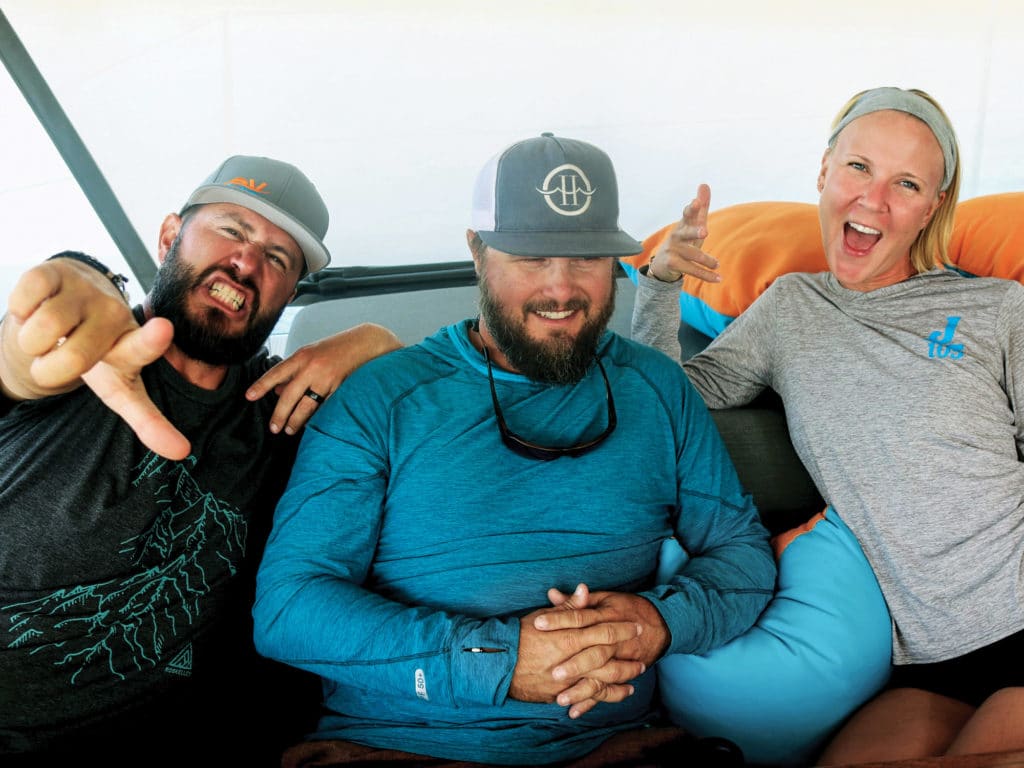
Back on the boat, we picked up our remaining crew, Jenni and Ryan, and set sail.
We anchored off 191-year-old Fort Sumter, which was attacked by Confederate forces on April 12, 1861, launching the Civil War. The citizens of Charleston, unaware of the bloodbath that was to come, sat on their balconies and toasted each incoming shot. Today, at nearby Folly Beach, beachcombers still find Civil War cannonballs buried in the sand.
No sooner did Jenna have the anchor down than she was back in the galley, preparing us a pickled-cucumber salad followed by fresh grilled Atlantic cod with citrus beurre blanc. Jenna has a heart for hospitality and attends to every detail with precision. RJ ran restaurants for many years before becoming a charter captain and loves to share the galley and grill with Jenna. They make a dynamic team, and we all enjoyed this fancy feast in the spacious cockpit together.
I know few greater pleasures than reconnecting with other sailors at sea. The last time this group had been together, I realized, was nearly four years ago at Grenada Sailing Week, racing Jon’s J/105 Dogsmile. Since then, Rebecca and I had returned our cruising boat, Liberte, to Pacific waters. Jon and Jenni had accomplished an incredible odyssey, delivering Dogsmile from Grenada to Florida through island lockdowns and a five-week quarantine in the British Virgin Islands, followed by Jon hauling her overland to Lake Pend Oreille in Idaho. Jenni, after running boats in the Caribbean and serving as relief mate on Icebear with 59 North Sailing, was momentarily landbound, working her tail off in an Amazon warehouse, putting aside every available dollar so that she and Ryan could buy a boat soon.
The delight of our reunion, especially in the pandemic, was unmistakable. We conversed in easy rhythm, as sailors do, of places sailed, characters met, scrapes survived and lessons learned.
RJ and Jenna were at a most exciting juncture in their boating lives, having christened OV (short for Our Velocity) with the owners only two months ago. For these newlyweds on a new boat, the days had been a whirlwind of getting systems sorted, opening countless boxes of boat stuff, and making miles. OV is the four-cabin version of the Elba 45, which Cruising World named the best charter boat of 2020. Jon, Jenni and RJ had run previous incarnations of FPs while working for LTD Sailing in Grenada, and they greatly appreciated this latest design.
Our crew was eager to get our hands on the boat’s controls, and we had our opportunity to put her through her paces the next day, with the wind still honking out of the northeast. We put up full mainsail, rolled out the jib, scampered out to sea on the ebb tide, and headed southwest along the coast. In the shoals off Lighthouse Inlet, seas piled up quickly—a reminder of the shipwrecks this part of the coast has collected.
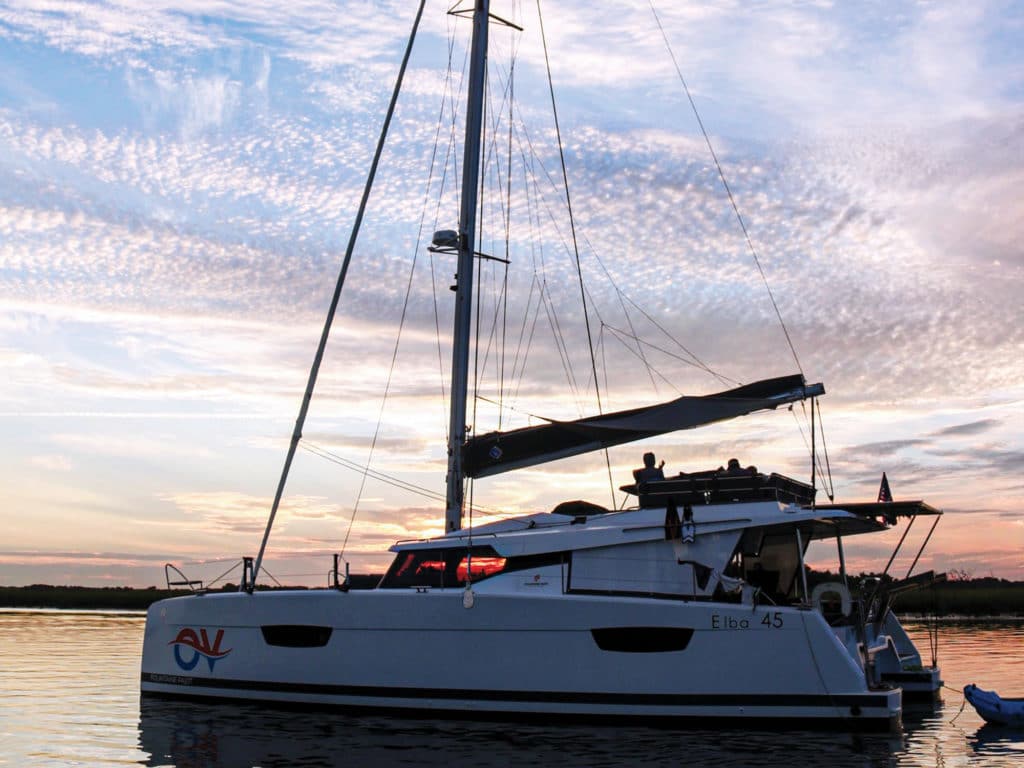
The catamaran showed a lively turn of speed, and with a little help from the following current, we were posting 12s routinely. When the helm became progressively powered up, we put one reef in the sail, then another, using the boat’s single-line reefing system. I was lucky to catch one wave just right and saw a speed of 14. I handed the helm to Jenni and told her that was the number to beat. The moment I went below, I heard her yelping about a 16.
After that romp, we cruised into the North Edisto River Inlet. There’s something special about sailing up a river. It brings to mind the tributaries I’ve taken in my own boat, such as the Northwest’s Columbia River, the Chagres in Panama, and the Rio Dulce of Guatemala. There was an air of mystery and exploration, and we could imagine the old flat-bottomed trading boats coming our way, those periaguas piled with stores from the interior.
Around a few more river bends, RJ eased us into the anchorage at Bohicket Bight, just right for our 4-foot draft: sheltered from the robust flow of the main channel but clear of the mud flats and oyster beds that can bring navigation to a quick stop in these waters. We had the anchorage to ourselves on this lovely fall afternoon.
“When we got to Charleston, I couldn’t find any information about cruising these waters,” RJ said. “There’s a ton of intel about, say, the Chesapeake, but very little here.”
Fortunately for us, RJ, the man who never met a stranger, had struck up a conversation several weeks earlier with a fellow captain, who gave him the coordinates for this anchorage and others. Turns out he had stumbled into a fascinating cruising ground here in what they call the Lowcountry. This was the Sea Islands—more than 100 islands stretching from here to north Florida—and a boat was the best way to see it. Lucky us. We watched the sun sink into the salt marsh and enjoyed Jenna’s delectable version of shrimp and grits, a Lowcountry staple.
RELATED: Wildlife Along the Intracoastal Waterway
RJ and Jenna were doing double duty on this trip. Yes, they were spending time with us as friends, but they were also in professional hosting mode. This was not a charter, but that time would come soon enough, since OV was already booked for the upcoming charter season in the US and British Virgins. Like all yacht crews, they were busting butt all the long day while making it look easy. Since we had all worked in the charter business at one time or another, we knew how hard this magic act could be. We also knew to stay out of the way. Even with experienced sailors on board, once you deviate from your process, it’s easier for something to go wrong. We did insist on taking turns doing the dishes, a job that’s tough to screw up as long as you don’t use too much water, but also rinse thoroughly (although I did see RJ hide his precious chef’s knives every time I began lathering up the plates).
The next morning, we headed for the dock at Bohicket Marina. As the crew tended to their boat duties, the rest of us visited the ice cream shop, where the T-shirts encouraged us to “Lick It in Bohicket.” Rebecca combined scoops of Moose Tracks, peanut-butter chocolate and caramel cheesecake, which she and I tussled over as we strolled the docks and looked at boats in the sunshine. What could be better?
Back on board, RJ let us know that great destinations such as Beaufort and Hilton Head were not far down the coast. But he had sized up our group’s proclivities for lounging, conversing and rambling, for anchoring out rather than being dock rats, for watching critters more than condos, and he had picked out a couple of wild anchorages nearby.
As we motored out, Jon hollered, “Shrimp run!” RJ launched the dinghy and slowed the catamaran in the current, while Jon and Ryan pulled up to shrimper Ellen Jean and asked the crew for 3 pounds of their freshest haul.
“A boat like that?” one of the shrimpers said, squinting out at our shiny yacht. “You need 5 pounds.”
Those shrimp were incredible. RJ had them on the stove in minutes in a house-made buffalo sauce, and they added extra zing to our pasta salad for lunch.
Our anchorage at Ocella Creek was incandescent in the afternoon sun. We shot some photos, went paddleboarding (reminding one another to go up-current first!), and watched the bottlenose dolphins in a feeding frenzy. Right in front of us on the paddleboards, they charged the banks again and again in a behavior called strand feeding, cooperating to herd baitfish onto the banks at low tide. At sunset, we all found a comfortable place on the flybridge—the best seats in the house.
Morning found us back on that flybridge again, watching the marshlands come to life. Brown pelicans flew by in formation. We saw egrets, great blue herons and sandpipers working the shoreline under the spectacular glow of the feathery-topped cordgrass.
The smells from the galley drew us down to the cockpit table, where Jenna served apple fritter monkey bread with blueberry compote. The mouth-watering treat, so called because we could pick it apart by hand, was shaped into little sea turtles. This, we agreed, would be an instant hit on the charter menu.
RJ had a new island for us to explore farther down the coast, so after our fill of breakfast, we motored out into the ocean in flat seas and into St. Helena Sound, off Edisto Island. We passed the classic architecture of Lowcountry coastal homes, their first floors built high on stilts above the flood plain, with wraparound porches, French doors and ornamental shutters.
We anchored in Big Bay Creek, once again surrounded by these marvelous green and gold marshlands, with dark-brown current—the lifeblood of these shores—moving through infinitely winding waterways. Passing boaters wished us well in thick Southern accents.
“Ah see you found our huhn-ny hole,” a big man drawled. “We don’t tell too many people about this one.”
Our group piled into the dinghy for a shore excursion to Edisto Island State Park, where we walked soft sand pathways through live oak, Spanish moss and palmetto trees. One trail led to a shell midden of discarded oysters dating back 4,000 years. At the Environmental Learning Center, I was fascinated to see that Ice Age land mammals once roamed here and that fossil hunters have found remains of elephants, camels, mastodons and dire wolves.
Too soon, I knew our trip was winding down, and I wanted to immerse myself as fully as possible in this landscape and this experience. So despite the small nibbles from some invisible evening bugs, Jon and I hopped on the paddleboards as the sun sank low and egrets settled into their roosts. We paddled our hearts out against the falling tide, and at Jon’s urging, labored our way up an onrushing side creek not much wider than our boards. We were way out in the empty stretches of cordgrass, our boat’s mast barely visible.
“If we can get turned around, it’s going to be a good ride,” Jon said.
He was right. That creek shot us down at exhilarating speeds, more like riverboating. Every time I took a paddle stroke, my board surged ahead as if by turbo power. Here were two mates who had done a lot of life and a lot of sea miles together, giggling madly, feeling that thrill of doing something slightly crazy on the water once again.
I second-guessed our outing later that night, when, from the safety of our catamaran, we watched a riverboat spotlight the shore, then snare their prey with a great deal of thrashing—a catch that must have been an alligator.
The next day, we cruised back into Charleston’s harbor. A Waszp foiling boat was making the most of the evening, producing the next generation of sailors who it seems will compete on foils. Another container ship was passing, one of 4,500 that arrive each year. This charming port—which once boomed, then busted disastrously after the Civil War—now booms again better than ever. We dodged a shrimp boat folding away its nets, as well as a floating tiki bar, improbably chugging into the dark.
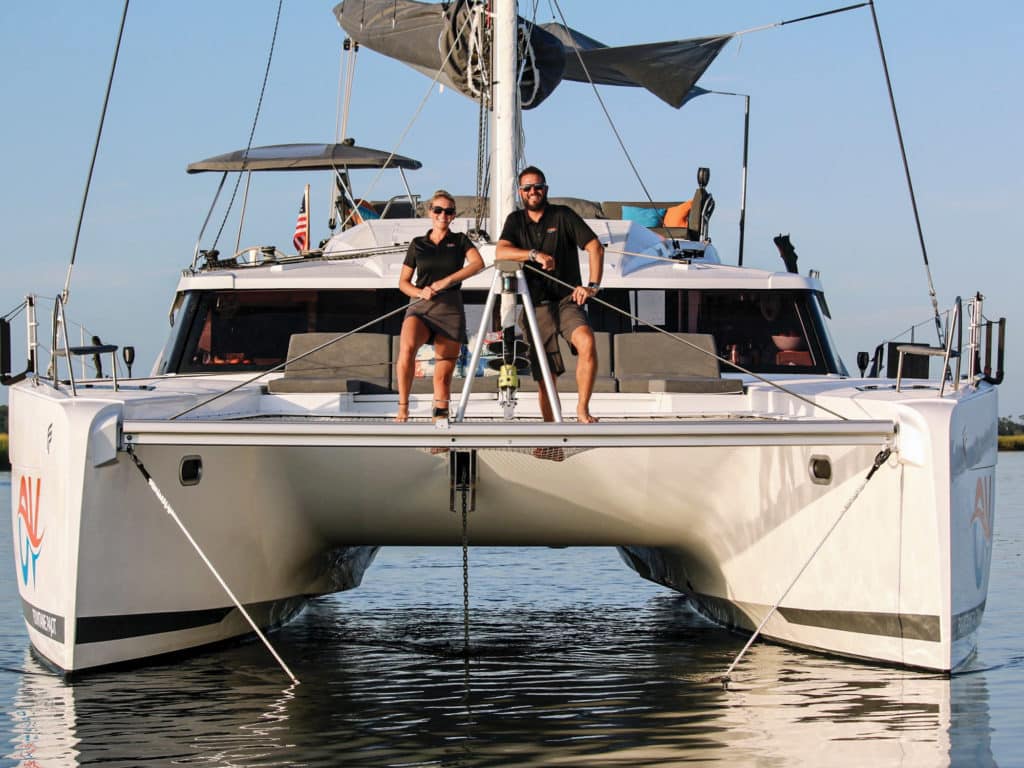
Our anchorage that night could only be described as awesome, snuggled up next to the looming bulk of Yorktown, with the glowing number 10 on her bridge. Sunrise over her bow was equally pleasing. Jenna flashed that killer smile again and rolled out a brunch of salty, carby goodness to soothe our sadness that the trip was over.
Explore that mighty Yorktown we did, most of the afternoon. Then we mounted a nighttime dinghy excursion to Shem’s Creek, a raucous local’s waterway, where we took our hardworking crew out to a seafood and barbecue dinner at Saltwater Cowboys. We watched lightning split the clouds as a system rolled in, realizing we’d had near-perfect weather for this time of year: not too hot, not too humid, few bugs, and no storms with names.
The next morning, we sent Jenni and Ryan off for their flight, and Rebecca, Jon and I helped clean the boat, despite the crew’s protests. We’d spent too much time in the trenches to leave a dirty boat. The boys washed the exterior, while Rebecca helped Jenna turn heads and beds.
Then the trip ended as it had begun, with heartfelt hugs at the top of the docks as our Uber driver waited patiently. I gave RJ a wad of cash. Should you tip on a friend trip? Absolutely.
I also left RJ and Jenna with an unrehearsed bit of advice. After all, some stranger’s long-ago words had landed me here.
“You guys are taking amazing care of the guests and the boat,” I said. “But most of all, remember to take care of each other. That’s the one that matters most.” For some reason, it left a sudden tear in my eye as I held Rebecca’s hand, and I could see it hit home with them too.
Thus are the joys of spontaneous travel by boat. Just weeks ago, we had no idea any of this existed. Now we knew the smells of the salt marsh, the tastes of shrimp and grits, and the golds of a Lowcountry dawn. We’d done our best to give RJ and Jenna a solid send-off. We’d marveled at what great boat design can do. And for some reason, I’d even learned the secret, late one night from an animated RJ, of how to win a hockey fight.
Our bonds of friendship were stronger than ever. Good days on a boat will do that. Those enchanted Sea Islands, a backwater often overlooked by cruising sailors, had been well worthy of our time and our affections.
David Kilmer cruises, races and runs boats at every opportunity, and rarely turns down a boat ride.








